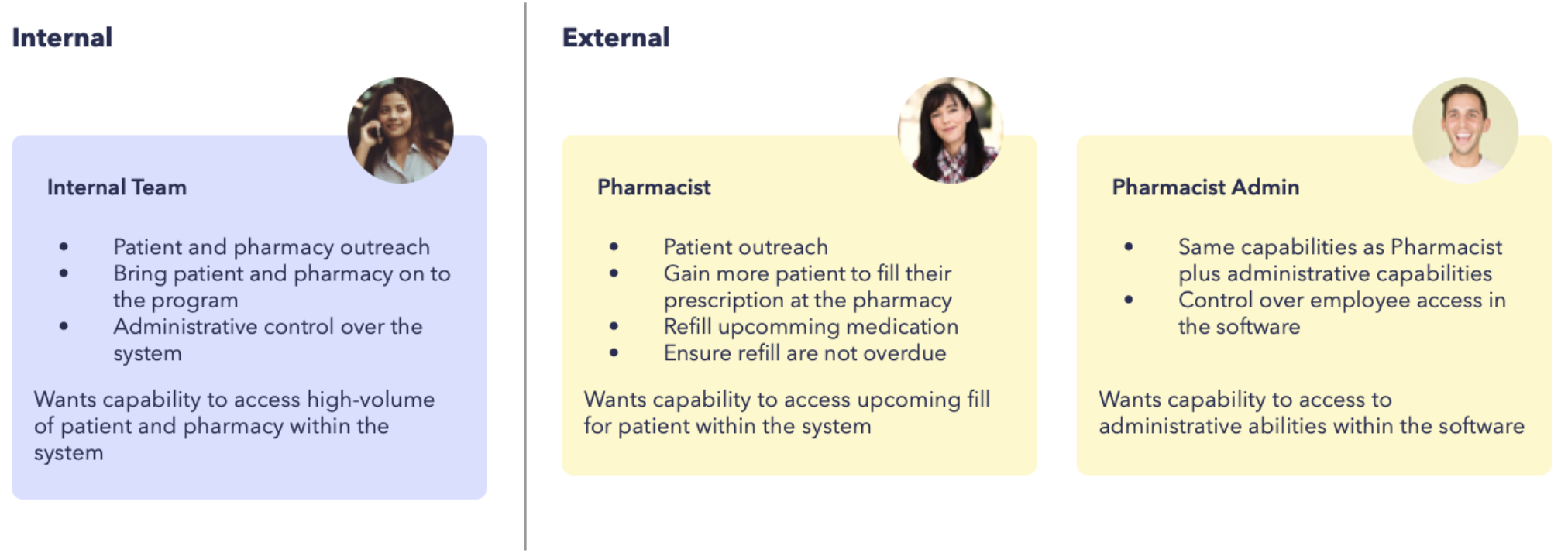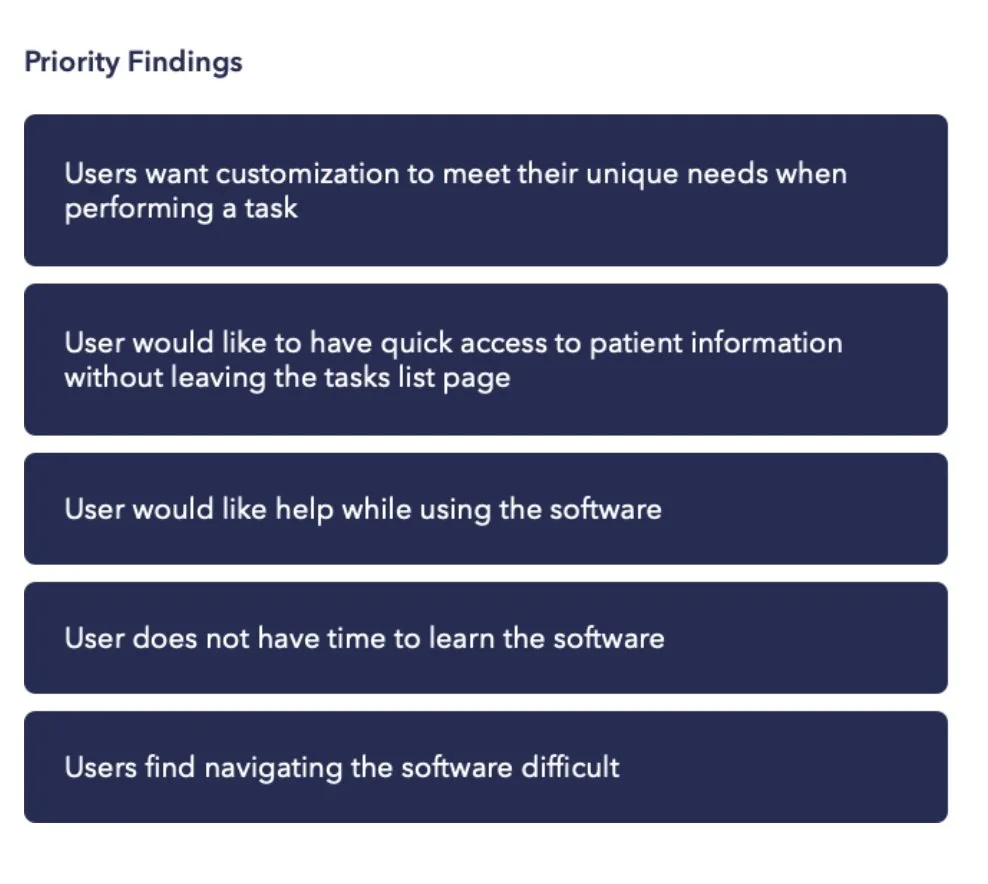Zipdrug by Anthem Inc. - UX Audit and Strategy
As part of being newly acquired by Anthem Inc., Zipdrug is looking to reimagine its CX and product experience. This will be the Version 1 release.
Zipdrug is a Medical Adherent and Telecommunication Software. This software is used to help pharmacists track medication adherence by notifying Zipdrug’s rep and pharmacists if a patient has not completed a prescription in a certain amount of days.
Role: Founding product designerCOmpany: Zipdrug by Anthem Inc.Duration: Jun 2020 - Nov 2020
Goals
Redesign software features and interface
Gain insight into how users are interacting with the software
Identify pain points in the software and service
Provide a better customer experience
Plan phases of software feature roll-out
Big Picture
Zipdrug is looking to improve the software experience, introduce new features, and improve its B2B experience as part of its new Version release.
My task was creating a North Star by reimagining the CX of internal (call centers / Zipdrug reps) and external users (Pharmacists).
The redesign included reimagining the software architecture, introducing new features, and designing a new streamlined internal system.
Conducting User Interview
Goal: Discovering pain points and behaviors
Focus groups and user interviews are conducted to identify user types, patterns, and pain points
External Interview Methodology
20-45 minutes phone interviews with pharmacists who are current users of the software
Large, medium, and small size pharmacies
Pharmacies are located in the U.S.
Internal Interview Methodology
Methodology: 30-45 minutes video interviews with
Zipdrug representatives who have used the software for more than 3 months
Ranges from Lead, mid-level, junior representatives
Core focus for UX
(For external users - pharmacists) Users were not able to identify the Zipdrug brand despite using the software daily
When this redesign launches, it will be the first set of data that Zipdrug will track. The team is looking to capture general data to help ground the software and help make informed design decisions going forward from an MVP.
Creating brand identity
Qualitative data from Pharmacists and Zipdrug reps on existing features and how to improve features to better fit their daily tasks
Ease of use
Understanding user’s behavior and their needs to ensure better features that will help execute their daily tasks
Meeting user’s needs
Utilizing quantitative and qualitative data to identify pain points, drop-offs, errors, and gaps in the software
Measurements for success
Reducing inconvenience
measurement of daily users and continuous use
Software retention
For measuring the internal team (Zipdrug’s rep) capability to utilize the software efficiently
Time per patient
User feedback and satisfaction
Quantitative
measure success for core flow and new features
Heatmaps
A behavior study was conducted through user interviews and existing marketing data to identify the core users, their roles, and their needs for daily tasks
Archetypes
Key Findings - Patterns & Behaviors
From conducted research, Pharmacists and Zipdrug reps have overlapping key pain points of the core experience. Tackling overlaps pain points will be the approach for Version 1 release.
Users find the software experience confusing and difficult to use
There are different mental model for small pharmacies versus medium and large pharmacies
Inconsistent branding and components in the software
The software does not allow customization for different types of users
There are no help documentation or contact information in the software
Language on the website are jargons which are difficult to understand
There are no user feedback for errors and no edit capability in the software
UX Strategy Recommendation for Features and Solutions
Users had difficulty navigating the system
Solution: Tree test were conducted to ensure naming were up to expectation of users. Categorization were also updated
Redesign software architecture
Users had different mental model performing specific tasks
Solution: Customization to meet their unique needs when performing a task would be allowed in later release
Allow customizable interface
Users find toggling back and forth between pages in the software made their task more difficult and increase the chance of mistakes
Solution: Simplifying interface from the current that force user to a new screen for every interaction to one screen with half screen interactions
Workflow friendly interface
Users did not have time to learn and memorize how to use the software. They often make mistakes and cannot fix them or cannot remember how to use functions.
Solution: Allowing users ability to edit errors and providing help documentation
Editing capabilities and help documents
Users expressed they were confused to what software they were using due to inconsistency. They also feel it is unsafe to use the software because the interface changing from page to page.
Solution: Create components that will be used throughout the software
Consistent components
Users cannot identify the name of the software, or the name of the company.
Solution: Established basic overarching brand identity for Zipdrug as well as individual product offering
Create branding guidelines
Continue to Part 2:




